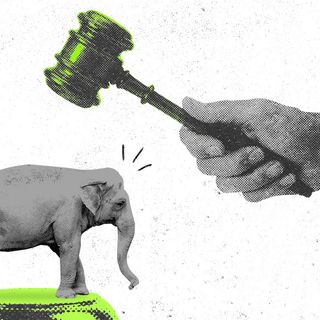Real human beings are now passé — at least according to the vision of some tech companies. On Thursday, Krafton, the parent company of PUBG, unveiled Ana — reportedly the company’s first hyperrealistic virtual human. Ana is meant to “establish Krafton’s Web 3.0 ecosystem,” the company said — and has a distinctly Gen Z personality and likeness to help achieve this.
“We expect her to attract the interest and popularity of Gen Z around the world. Ana will release an original music track and expand her scope of activity as an influencer into various areas across entertainment and esports,” said Josh Seokjin Shin, head of the Creative Center of Krafton.
Ana isn’t the only virtual human influencer around. A company named Brud createdMiquela — another hyperrealistic virtual human who has participated in tech campaigns, dropped NFTs, worked with Prada and Calvin Klein, “performed” at Coachella, and follows IG Reel–and–TikTok trends to boot. Not so coincidentally, Miquela also got roped into a blockchain-related project: “Dapper Labs acquired Brud in late 2021 in an all-equity deal, tasking her team with bringing DAO (Decentralized Autonomous Organization) infrastructure mainstream, a feature set that will one day underpin Miquela herself,” according to Virtual Humans.
Lu do Magalu is another virtual human with massive social media followings across platforms — she belongs to a Brazilian retail giant and frequently appears in product reviews, unboxing videos, and the regular influencer fare that one might be used to.
Imma is anothervirtual human who was recently employed by Hugo Boss; Daisy and Maya, also virtual humans,appeared in Calvin Klein campaigns, and launched the Puma rider shoe, respectively. Many others have similarly been involved in brand endorsements and lifestyle content. India also has its own virtual influencer in Kyra — who traipses around palaces and beaches, and loves traveling and yoga.
Related on The Swaddle:
We Will Soon Have Sentient Sex Robots. Will They Be Able To Consent?
These individuals are virtual influencers. There are more than 150 of them across social media, according to Virtual Humans — but most are involved in human-like activities like vacationing, eating, talking to followers, and generally, being like real human beings in most ways. Except, they’re not real.
“Through the deft use of social media, they connect with their fans, who are mostly the Gen Z audience. Their activities are such that their followers can relate to them,” Lifestyle Asia notes. Yet, there is something disquieting about using human-like people to “influence” real human beings — particularly when the aim is to target the youngest social media users as a demographic. While influencing by itself has been variously criticized as manipulative, virtual influencers go one step further: they blur the line between humans and robots more than ever.
What does it mean, for instance, for a non-existent person, an algorithm, to “love yoga” as Kyra does? How do we make sense of Rozy Oh celebrating her “2nd 22nd birthday”? While virtual influencers are blatantly transparent in their ultimate use value — social media marketing — their behavior, scripts, mannerisms, and activities merely resemble things that are unique to humans alone. In other words, authenticity is sacrificed to aesthetics, and the new media marketing landscape pushes the notion that feeling and experiencing things are not as important as being seen to feel and experience things.
Most importantly, virtual influencers are supposed to be “relatable.” They do the things they do to simulate real human beings and be entities one can see themselves in — or even want to be. If we’re not careful then, virtual influencers may end up doing more than just selling us things — they could also obscure what it really means to be human when we can no longer tell the difference between ourselves and non-humans who don’t exist.




